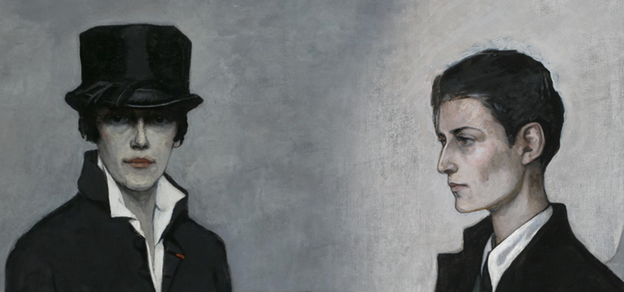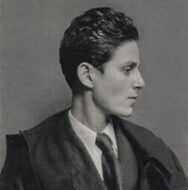In the 1920 – 30s, LGBT nightlife and culture was booming in Europe. Before the rise of fascism and the Nazi burning of Institut für Sexualwissenschaft, an early sexology research center and one of the first transgender clinics, many gay, lesbian, bisexual, and transgender/gender nonconforming people could live somewhat open lives, evident in certain artistic circles around Europe such as those that artists Gluck and Romaine Brooks frequented.
For many LGBT people, art became an additional form of gender expression. Especially around the turn of the 19th century and the rise of more avant-garde artistic movements, the art world was becoming increasingly less bound by rigid norms, and in many ways allowed for more explorative social and cultural works.
Gluck
The artist Gluck was born into the wealthy Jewish family that founded the catering empire J. Lyons & Co. Gluck rejected their birth name and chose to be identified as ‘Gluck, no prefix, suffix, or quotes,’ and also used the more masculine names “Peter” and “Hig.” Educated at St. John’s Wood Art School, Gluck exhibited for the first time in 1926 at the Fine Art Society, the location for all of the artist’s subsequent exhibitions, the last of which was held in 1973. Gluck’s subjects included landscapes, self-portraits, still-lifes of flowers, and portraits of the women with whom Gluck had relationships, and were only shown at solo exhibitions. Most successful during the 1930s, Gluck expressed gender fluidity by wearing androgynous clothes and short hair.
Romaine Brooks
Romaine Brooks was an American painter who worked mostly in Paris and Capri. She specialized in portraiture and used a subdued tonal palette keyed to the color gray. She is best known for her images of women in androgynous or masculine dress, including her self-portrait of 1923, which is her most widely reproduced work. Likewise, her piece titled Peter (A Young English Girl) is of fellow artist, Gluck.
Although her family was wealthy, Brooks had an unhappy childhood after her alcoholic father abandoned the family; her mother was emotionally abusive and her brother mentally ill. By her own account, her childhood cast a shadow over her whole life. She spent several years in Italy and France as a poor art student, then inherited a fortune upon her mother’s death in 1902. Wealth gave her the freedom to choose her own subjects. She often painted people close to her, such as her partner of more than 50 years, the writer Natalie Barney.









